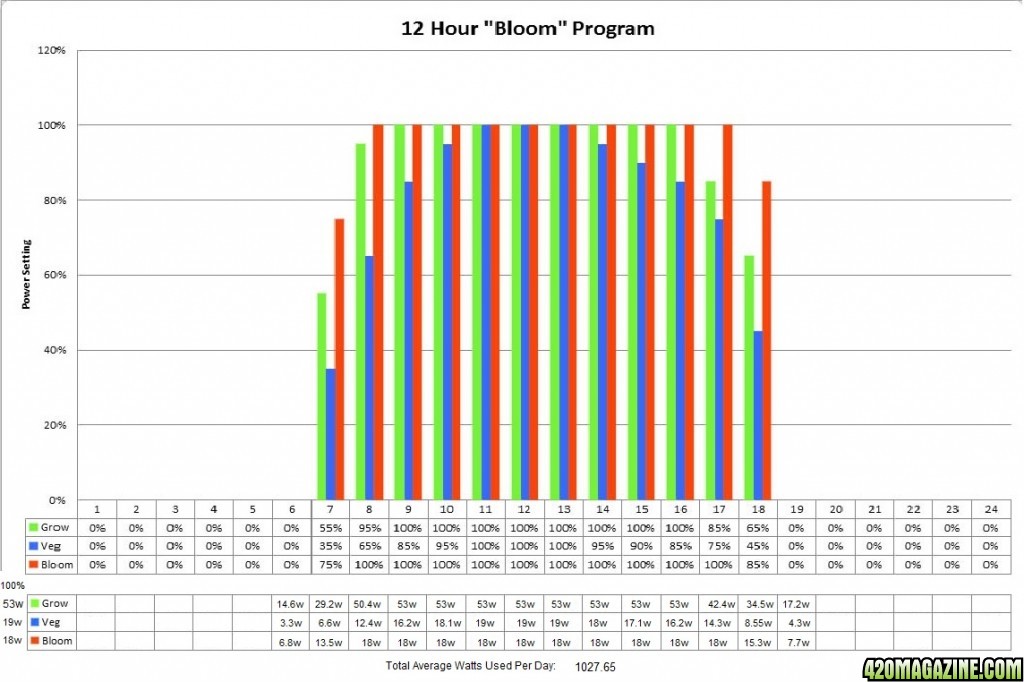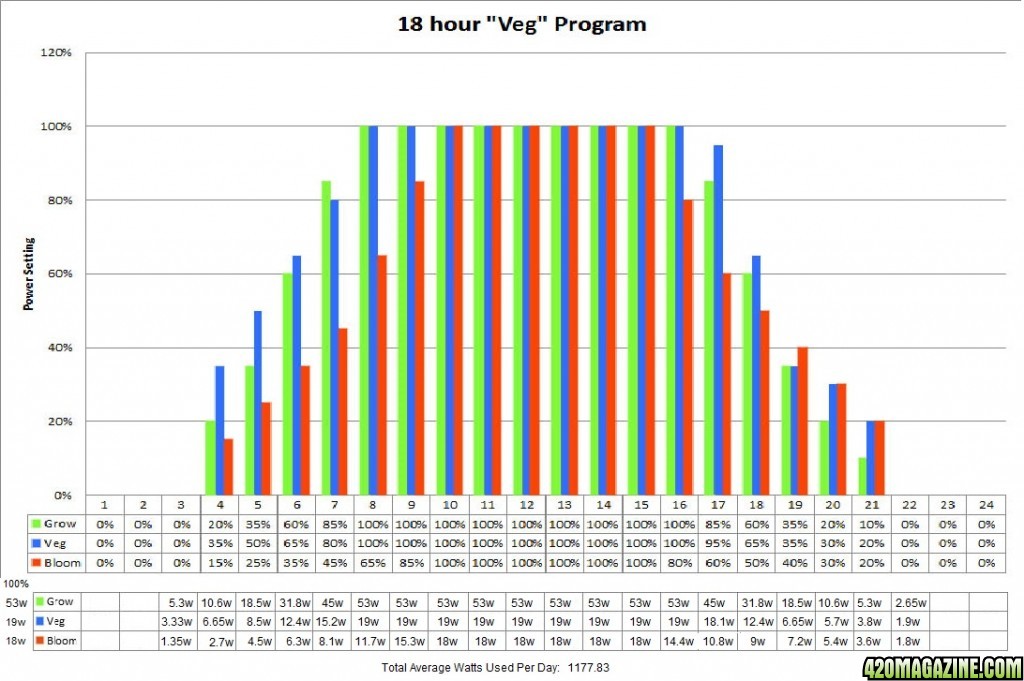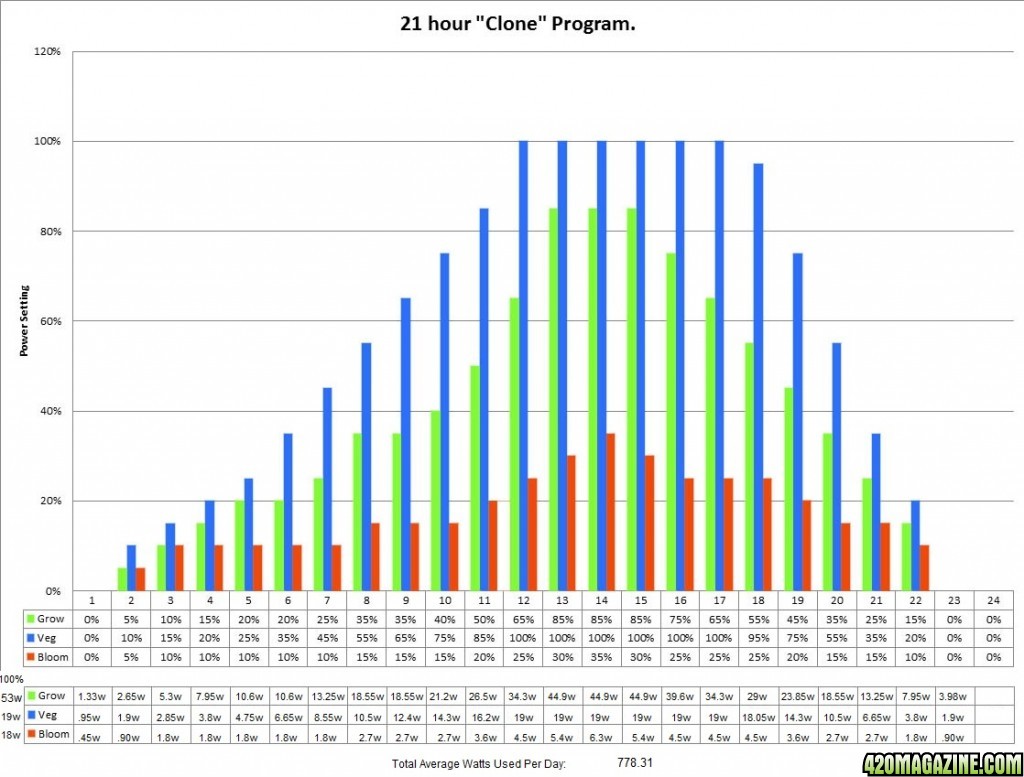Re: Icemud's Grow 8.0 - New Intelligent-Gro LED - 2 x IGRO-228 LED - Testing And Revi
I have dug into red, blue and photo period manipulation. I actually am experimenting with a GLR that gives an hour of dark withing the light period based on the theory that rubisco would be depleted by 6-7 hours of full on steady state photo synthesis. (7 on, 1 0ff, 7 on,4 off, 1 on, 4 off.)
I am more interested in the science behind the engineering of the lamp you're testing. Do we know for sure that mimicking natural solar dynamics is an improvement over the basic light on lights off?
Thanks for your consideration.
Ludweed
Its a great question, however, I am only sponsored to try the light out, and had no participation with creation, manufacture or anything like that, so I have no clue what the "reasoning" or "science" behind the dimming schedule. These are the things that come to mind...
One light for many uses... with most LED lights, your stuck with one spectrum and thats it. So say your in veg, and you want to encourage your plants to have tighter internodes. With most LED lights, you would have to buy a blue LED light to help tighten up the nodes, with Intelligent Gro all you have to do is turn down the reds, and turn up the blues... advantage for the custom schedules.
The same goes for a tight bushy plant that you want to make stretch more. With a single fixed spectrum light, you would have to go out and purchase more red led's to accomplish more stretch. With Intelligent LED you only have to dial down the blues, and increase the red intensity.
I was reading into this last night, and it seems that at the noon/mid day point, plants go through a photosynthesis depression, the most active photosynthesis takes place at sunrise, until noon, and then slowly tapers off towards the night period. So with this being said, it would make most sense to give plants the most light during the beginning of the daylight period, and at the midway/noon point, start tapering off the intensity of light. This would be possible with a custom light, but not for a LED with fixed ratios and intensities.
Another piece of info I found last night when reading is that very intense blue light spectrums, will actually slightly hinder photosynthesis if there is too much blue. What happens is the chloroplasts instead of spreading across the leaf surface during dim/fairly intense blue light, but in the presense of very intense blue light, the chloroplasts group together on the vertical surfaces from the blue light source, which reduce the efficiency of converting blue light to energy. So by having control over your blue light output, I believe as we know more about this, it may also be a good reason to have custom control.
Another benefit....Power savings... as mentioned a few posts ago, last page before this... having a light that dims can save a great deal of power over the course of a cycle. As many of us know, young vegging plants do not need as much intense lighting as a flowering plant, so when you have a LED with a fixed output intensity, a lot of this light and energy is wasted if used on small vegging plants, in which the Intelligent Gro lights can be dimmed to save power, and give the plants exactly what they need. Another plus.
These are just a few things that I have found regarding light manipulation, and I'm sure there is much more. I encourage all of you to do some research and post your findings here, the more we know, the better we can grow!










 They definitely are loving the Intelligent grow veg program
They definitely are loving the Intelligent grow veg program 